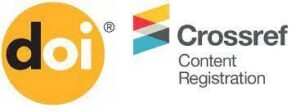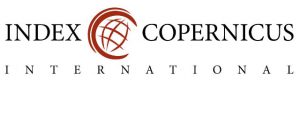
Extracting a Journal Article for Acceptable Publishing
Extracting a journal article acceptable for publishing must meet a given criteria. Approximately 10% of the journal articles submitted for publishing are accepted for publishing. You do not need to belong to the 90% category failing to see the light of publication, and that is you need to read this. Although some journal publishers provide specified criteria that journal articles must meet, a high quality and informative journal article needs to have certain important elements for it to be accepted. You have landed this page because possibly you are looking forward towards publishing your work. This guidance provides the necessary elements that journal publishing firms could like to see and a step-by-step guide that will ensure your article journal is one-off process.
Abstract
An abstract for a scientific research article should capture the content of the whole article. However, this doesn’t mean that you write a 10-page paragraph that capture the whole article that you want to publish. What this means is that by the time the reader reads your 250-word abstract, s/he knows what your journal article is all about. Readers would only take time downloading and reading pdfs that they know have the specific content that they are looking for. As mentioned above, an abstract is just a complete research in 250 words. This means that extracting a journal article acceptable for publishing requires you to write an introduction, literature review, methodology, findings and conclusions. You need to pick key elements of each section and place it in the abstract. Do not forget to include the key words just below the abstract. Focus your abstract only on the variable that you have chosen to create a journal article for.
Introduction
The first step of extracting a journal article that can be accepted for publishing is writing an introduction. The introduction provides a:
- background information
- problem statement
- justification
- rationale of the phenomenon being investigated.
Journal publishing sites do not expect you to copy-paste the whole sections of the introduction as they appear in the project or thesis. However, you summarize each section into small paragraphs because writing too much content in the introduction may lead to lack of balance in the sections and make the journal article too large. The key idea here is that you need to ensure that by the time the reader goes through your 2-3 page introduction, he has a grasp of the background to your study, a problem that motivated your study, why the study is necessary and aims and objectives of the study. The problem of the study should feature a brief and concise reflection of both conceptual and empirical gaps.
Literature Review
This is a critical aspect that journal publishers check. You journal article should be based on a particular background of previous study. In the literature review section, chief editors tend to check if you have:
- comprehensively defined your concepts (conceptual review)
- included a conceptual framework (diagram)
- discussed theories underpinning your study (theoretical review)
- critiqued previous research (empirical review).
You are expected to identify consistencies and inconsistencies in characterizing previous research and explaining them in the light of your findings. Keep the sources that you analyze because you will need them later in your findings discussion to support the results from your study. When extracting a journal article for publishing, ensure that (in the literature review) the previous studies and any other content reviewed exhibits consistency with the phenomenon being investigated. If your literature is not relevant, journal publishing firms may reject your journal article. Since you are extracting an article for a single variable from your study, you need to focus on literature that is related to the specific variable that you have chosen. Do not summarize the whole literature review section.
Methodology
The methodology section identifies and justifies methodological choices towards your research. In this stage of extracting a journal article acceptable for publishing, you are required to identify your research design. The research design chosen for a given study should be relevant to the phenomenon being investigated, the target population, and the context of the study. For example, journal publishers may doubt the credibility of findings from a study that used self-administered questionnaires to collect data from a sample of aged people (such as above 70 years) or an illiterate population because most of them cannot read and write. At the same time, interviewing 100 university students using unstructured questionnaires may be subjected to doubt. The methodology section should also identify:
- your research philosophy
- population
- sampling and sampling techniques
- data collection instruments and procedures
- data analysis and presentation techniques
- ethical considerations of the study.
Remember to maintain brevity and clarity to avoid exceeding the number of pages for this section. You can summarize each element in one sentence or two. Sample and sampling processes should be very clear because any confusion may lead to rejection of your journal article by publishing firms.
Findings
Another focus when extracting a journal article acceptable for publishing is the findings section. In this section, journal article publishers want to see summarized results from your study. Similar to other sections, what you are doing here is that you are extracting a journal article for a given variable. Your findings section should reflect the same. When working with three or four variables, some of your tables will bear results for all variables in a single table. In this case, you need to pick only results for the specific variable you are focusing on. However, general sections such as response rate and demographic details of the respondents will remain the same. Ensure you present the findings step-by-step to make them more appealing and understandable. Use figures, tables and graphs to summarize your data. While some journal publishing sites allow authors to analyze and discuss findings in the same section, other publishers may require a different section for findings presentation and another section for discussion. Either case, you need to know exactly what you are presenting and how you are presenting it.
Conclusions
The role of the conclusion section is to show how your work advances the field from the present state of knowledge. While in some publishing sites it is a separate section, other journals require it to be the last paragraph in the section of findings discussion. In either case, your introduction provides an opportunity for reviewers and readers to judge your work. Journal editors also use the conclusion section to determine whether your work merits publication in the journal or not. One of the most common mistakes that authors do in this section is repeating the abstract or creating a list of experimental results. Journals publishers do not accept trivial statements from your results section. The expectation here is to provide a clear scientific justification of your work and indicate possible uses and extensions if appropriate. Do not forget to include paragraphs for recommendations and suggestions for future research. When writing the conclusion, propose present global and specific conclusions in relation to the aims and objectives included in the introduction.
References
Remember to include the reference list. Include only sources cited in the journal article. Do not include references that are not cited by copying the whole reference list from your project. This means you have to take time and check all references, ensuring you pick only those that have been used in the journal article to be published.
Your work is Impressive!
Remember your interested is to make remarkable contributions to the field of academia. Sometimes you may be overwhelm by the extraction process of you are not very sure of the content for each section. I mean you may need some training. In this case, you can contact organizations that provide training assistance to guide you in the extraction process.


1 Comment